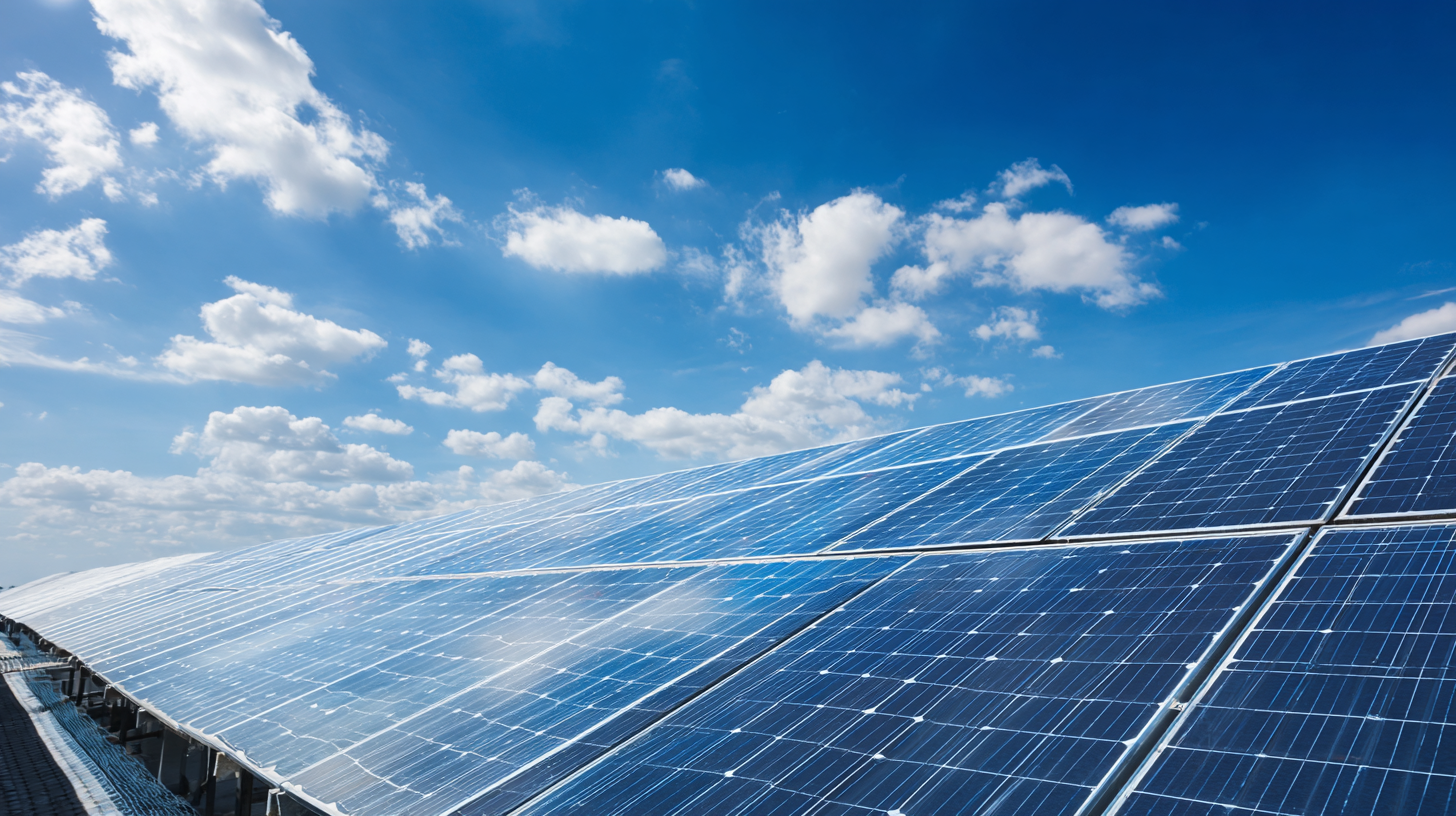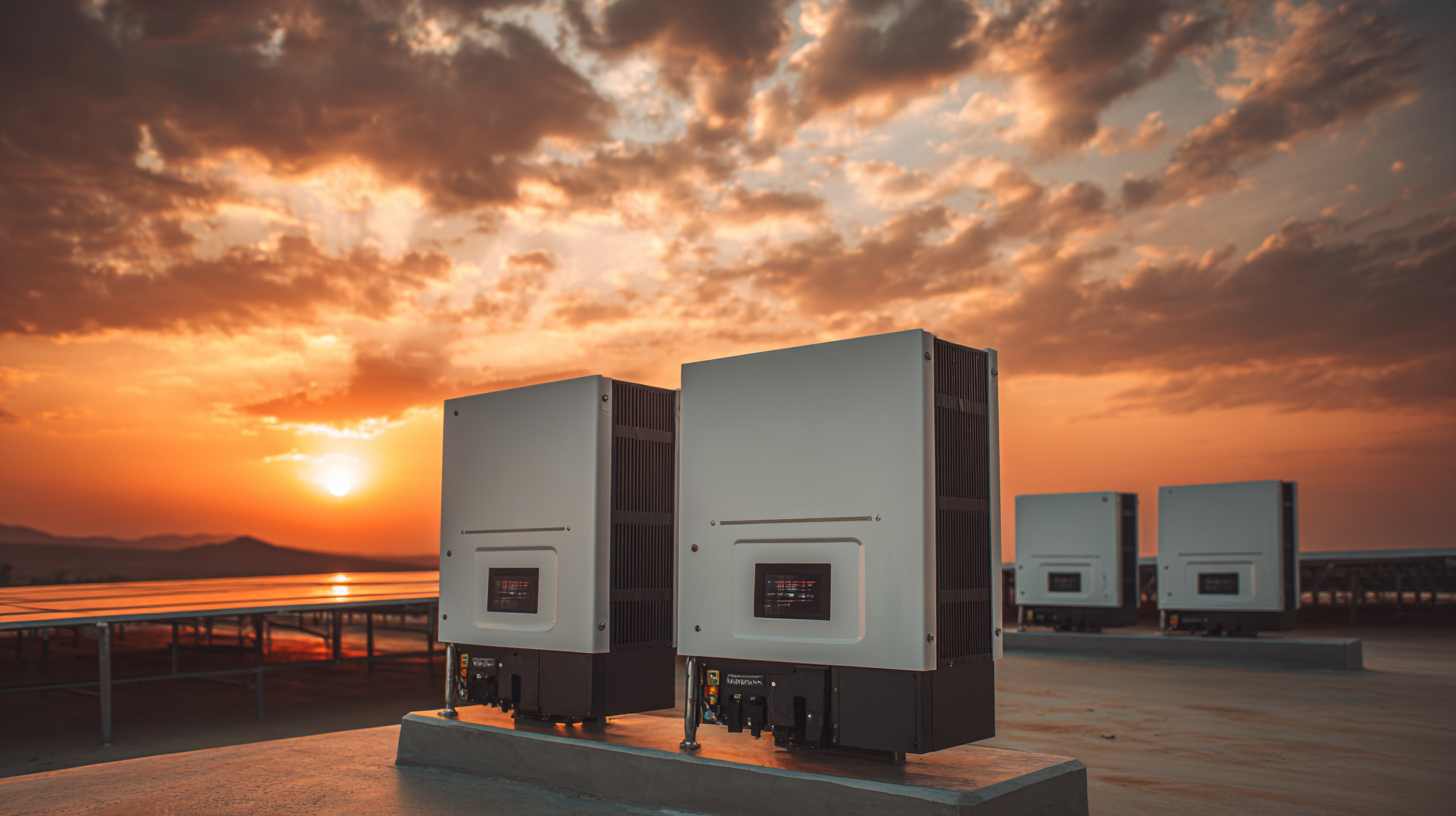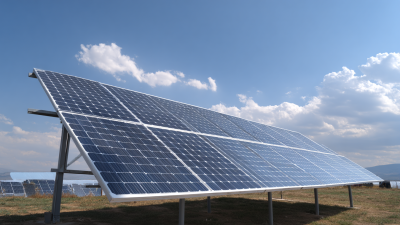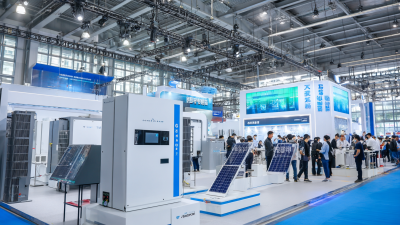ALL PRODUCTS
- Solar Panel
- Hybrid Inverter
- Lithium Battery
GSB SOLAR LITHIUM BATTERIES
- Gel Battery
- Solar Street Lights
- Pump Inverter
As the global shift towards renewable energy sources accelerates, solar inverters play a crucial role in enhancing the efficiency of solar power systems. According to a report by the International Renewable Energy Agency (IRENA), the solar photovoltaic (PV) capacity worldwide reached over 850 gigawatts by the end of 2020, marking a significant increase from previous years. Solar inverters are vital components, converting the direct current (DC) generated by solar panels into alternating current (AC) for use in households and businesses. Recent advancements in inverter technology, including the rise of smart inverters and optimizers, have increased overall energy yield and grid reliability. The U.S. Department of Energy projects that smart inverters can lead to a 30% increase in solar energy utilization by 2030, underscoring their pivotal role in the renewable energy landscape. As we explore the future of energy, it becomes evident that optimizing solar inverter technology will be essential for achieving sustainability goals and ensuring a resilient energy grid.

Solar inverters play a pivotal role in enhancing the efficiency of renewable energy systems, especially in solar power applications. These devices convert the direct current (DC) generated by solar panels into alternating current (AC), which is essential for powering homes and businesses. According to a report by Grand View Research, the global solar inverter market is projected to reach $23.16 billion by 2026, driven by increased adoption of solar energy solutions. There are mainly three types of solar inverters: string inverters, microinverters, and central inverters, each serving distinct applications depending on system size and configuration.
String inverters are most commonly used in residential settings, offering a cost-effective solution for converting solar energy. They work well when solar panels are installed in unshaded areas, but their efficiency can suffer if some panels are shaded. On the other hand, microinverters are ideal for larger installations, allowing each panel to operate independently, which maximizes energy harvest. Central inverters are typically used in utility-scale solar plants, providing enhanced efficiency for large-scale power generation.
Tips: When selecting a solar inverter, consider factors such as the size of your solar array, installation location, and expected energy production. Additionally, look for inverters with advanced features like real-time monitoring and smart grid compatibility to maximize your investment in renewable energy.
Choosing the right solar inverter is crucial for maximizing the efficiency of your renewable energy system. According to the International Renewable Energy Agency (IRENA), the efficiency of solar inverters can significantly impact the overall performance of a solar energy installation. High-quality inverters typically achieve efficiencies between 95% and 98%. This means that ensuring you select an inverter with a higher efficiency rate can lead to increased energy output and savings over time.
When selecting a solar inverter, consider factors such as system size, type of PV modules, and local environmental conditions. Data from the U.S. Department of Energy highlights that string inverters are commonly used for residential systems due to their cost-effectiveness and simplicity. However, for larger commercial installations or systems with shading concerns, microinverters or power optimizers may be optimal as they enhance energy yield by optimizing the performance of each individual panel. With the right choice, you can leverage advancements in inverter technology that are paving the way for a more efficient and sustainable future in renewable energy.

Installing a solar inverter is a crucial step in harnessing the power of solar energy effectively. The process begins with selecting the right inverter for your solar system based on your energy needs and the specifications of your solar panels. Ensure the inverter is compatible with the voltage and output of your solar setup for optimal performance.
Once you have your inverter, site preparation is essential. Choose a location that is sheltered from direct sunlight and extreme weather conditions to maximize its lifespan. Make sure the area has proper ventilation, as inverters can generate heat during operation. Additionally, secure your inverter at a height that is accessible for maintenance and monitoring, making it easier to ensure everything is functioning correctly.
Tips: Always follow local building codes and regulations during installation to avoid potential fines and ensure safety. Engaging a professional installer can also provide peace of mind, as they will have the expertise to handle any complexities involved. Regularly check your system post-installation to ensure that the inverter displays the correct performance metrics, which is essential for maintaining maximum efficiency and longevity of your solar energy system.
| Installation Step | Description | Tools Required | Estimated Time |
|---|---|---|---|
| Site Assessment | Evaluate the installation location for sunlight exposure and space. | Measurement tools, clipboard | 1-2 hours |
| Mounting Preparation | Prepare and install mounting brackets for the inverter. | Drill, level, wrench | 2-3 hours |
| Inverter Connection | Connect the inverter to the solar panels and electrical system. | Screwdriver, wire stripper | 3-4 hours |
| System Testing | Perform tests to ensure everything is functioning properly. | Multimeter, test load | 1-2 hours |
| Final Inspection | Conduct a final check of the entire installation. | Inspection checklist | 1 hour |
Maintaining your solar inverter is crucial for ensuring optimal performance and longevity of your renewable energy system. One of the key maintenance tips is to regularly check the inverter’s display for any error codes or irregular indicators. Addressing these issues promptly can prevent more significant problems down the line. Additionally, it is important to keep the inverter clean and free of dust or debris, as accumulated dirt can affect its efficiency and cooling capabilities. A gentle wipe with a soft cloth is often sufficient to maintain its cleanliness.
Another essential maintenance practice is monitoring the temperature around the inverter. Ideally, it should be installed in a shaded area or in a well-ventilated space to avoid overheating, which can shorten its lifespan. Furthermore, consider scheduling annual professional inspections to evaluate the system comprehensively. This can help catch any potential issues before they escalate. By following these maintenance tips, you can ensure that your solar inverter continues to perform effectively, contributing to a more sustainable energy future.
This chart displays the efficiency of solar inverters from 2015 to 2023, reflecting advancements in technology and design.
The solar inverter industry is undergoing significant enhancements, driven by emerging technologies that improve performance and efficiency.
According to market forecasts, the global power electronics gallium nitride (GaN) wafer market is expected to reach
$124.28 million by 2024, growing to
$189.78 million by 2032, with a compound annual growth rate (CAGR) of
5.5%. This advancement in semiconductor technology plays a crucial role in optimizing solar inverter efficiency.







